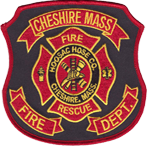High Angle/Low Angle Rescue
Rope access is used in a variety of industrial, commercial and rescue situations. When it comes to rescue scenarios, the higher the angle, the more challenging and technical the rescue becomes. This is because at higher angles, more weight is dependent on the rope setup. At lower angles, at most or all of the rescuer and victim’s weight are supported by the ground which, in most situations, are stable.
Here are the three categories of rope rescues based on their angle, and the differences between each approach.
Low angle rope rescue
A rescue situation that involves angles of up to about 15-35 degrees is considered low angle. In these scenarios, most of the rescuer’s weight is supported by the ground and rope is only used for balance or assistance with the rescue.
Common examples of low angle situations are car accidents when the vehicle has gone down the side of the road, or someone falling over a slight ridge or incline such as down a ravine.
Many emergency personnel, such as firefighters, have some kind of low-angle rescue training because it’s more commonly encountered and is less specialized than steep angle and high angle rope rescues.
Steep angle rope rescue
Rescues at 35-60 degrees are considered steep angle rescues. In this situation, the weight of the rescuer and victim are distributed relatively evenly between the ground and ropes.
These rescues can actually be a higher risker than a low angle rescue because more weight may be placed on objects around the setup, such as on rocks. Rescuers are also fully dependent on the rope system for upward travel because of how much higher the angle is compared to a low-angle rescue.
High angle rope rescue
High angle rescue is considered to be terrain that has a slope angle of 60 degrees and higher. Examples of industrial work hazards that may require high angle rope rescue are wind turbines, towers, pipe cracks, ledges and tanks.
In this type of rescue, rescuers are totally dependent upon the ropes for accessing and exiting the rescue. Since most of the rescuer’s and victim’s weight is handled by ropes, errors in setting up the rope system could be catastrophic or fatal.
Rescue technicians who perform high angle rope rescue require more specialized rope training than specialists performing low-angle rescues because since there is more risk of an accident due to judgement errors.
To learn more about how to pick the right rope rescue team for your oil, gas, mining or construction project, download out free white paper on How to Select an Emergency Response Services Team.
Informative Links:
- FireRescueMagazine.com
APTOPIX Freeway Rescue - FireEngineering.com
Starting a Rope Rescue Program
